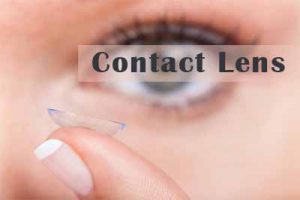- Home
- Editorial
- News
- Practice Guidelines
- Anesthesiology Guidelines
- Cancer Guidelines
- Cardiac Sciences Guidelines
- Critical Care Guidelines
- Dentistry Guidelines
- Dermatology Guidelines
- Diabetes and Endo Guidelines
- Diagnostics Guidelines
- ENT Guidelines
- Featured Practice Guidelines
- Gastroenterology Guidelines
- Geriatrics Guidelines
- Medicine Guidelines
- Nephrology Guidelines
- Neurosciences Guidelines
- Obs and Gynae Guidelines
- Ophthalmology Guidelines
- Orthopaedics Guidelines
- Paediatrics Guidelines
- Psychiatry Guidelines
- Pulmonology Guidelines
- Radiology Guidelines
- Surgery Guidelines
- Urology Guidelines
Protamine shows promise for new types of contact lens disinfectant

Protamine a natural protein with a proven safety record may be useful in developing new types of disinfectant solutions for contact lenses, according to a study published in the November issue of Optometry and Vision Science, official journal of the American Academy of Optometry. The journal is published by Wolters Kluwer.
In laboratory tests, protamine solutions perform at least as well as current disinfectant solutions in killing microbes that can cause contact lens-related infections, according to the report by Mahesh K. Bandara, PhD, and colleagues of University of New South Wales, Sydney. But more research will be needed to assess the safety and effectiveness of protamine-containing solutions before they are adopted for broader use in contact lens care.
Protamine Kills Microbes Including Causes of Contact Lens Infections
The researchers performed a series of experiments to evaluate the antimicrobial effects of protamine solutions, with and without additives commonly used in contact lens disinfectant products. Originally derived from salmon, protamine is already used for other medical purposes especially as an antidote to the anti-blood clotting drug heparin.
Following industry standards, the study tested protamine solutions for antimicrobial activity against a standard laboratory panel of microbes, as well as against organisms isolated from patient samples. Potential toxic effects on cultured cells were evaluated as well.
The results showed significant antimicrobial effects of protamine solutions. The effects were "dose-dependent" the higher the protamine concentration, the greater the microbe-killing effectiveness. Protamine killed a wide range of bacteria, yeasts, and fungi, including common causes of contact lens-related infections.
Against most organisms, protamine was even more effective in solutions containing common additives. In standard tests, the antimicrobial effects of protamine were comparable to those of commercially available contact lens disinfectant solutions. All solutions tested had minimal toxicity indicating that they also had a good safety profile.
Infections of the cornea the clear, outermost layer of the eye are a potentially serious complication of contact lens wear. Many different risk factors have been identified, including poor contact lens cleaning and disinfection routines.
Millions of people worldwide use multipurpose disinfecting solutions to disinfect, clean, rinse, and store their contact lenses. However, these solutions may not always be effective against bacteria and other organisms. With its broad spectrum of antimicrobial activity and long history of medical use, protamine could be a useful alternative for use in contact lens care products.
"This study highlights the potential for protamine to be used for the development of effective multipurpose disinfection solutions," Dr. Bandara and colleagues conclude. At least in laboratory studies, protamine solutions have a "progressive dose-dependent killing effect" on bacteria and other organisms that can cause corneal infections.
"Protamine represents a new strategy and a very different type of compound to help defend against ocular infections related to contact lens use," comments Michael Twa, OD, PhD, FAAO, Editor-in-Chief of Optometry and Vision Science. Further research will be needed to evaluate protamine's stability, compatibility with contact lens materials, and safety for use with contact lens care products and the eye.

Disclaimer: This site is primarily intended for healthcare professionals. Any content/information on this website does not replace the advice of medical and/or health professionals and should not be construed as medical/diagnostic advice/endorsement or prescription. Use of this site is subject to our terms of use, privacy policy, advertisement policy. © 2020 Minerva Medical Treatment Pvt Ltd